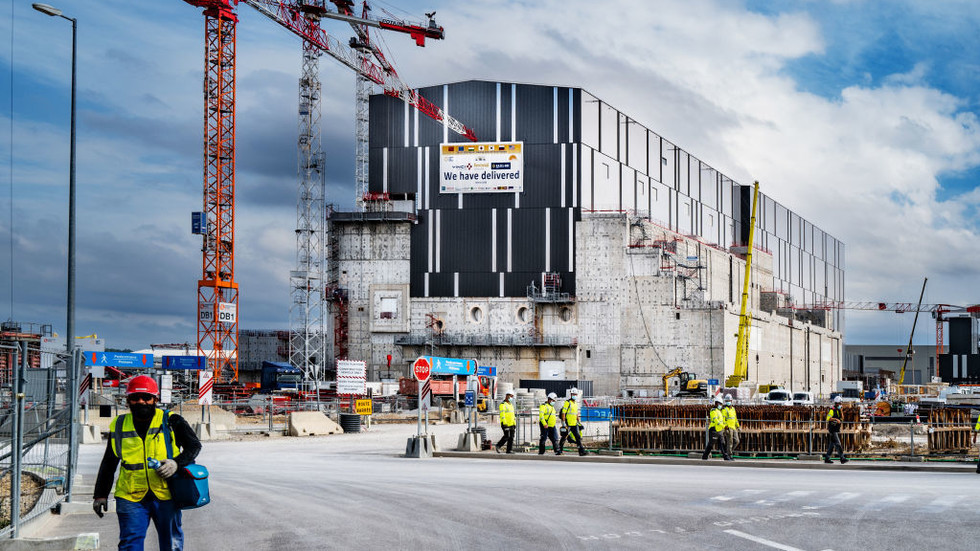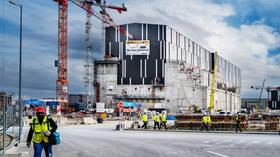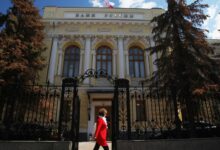
An international nuclear fusion project under development in France was scheduled to start providing clean carbon-free energy by 2025

International nuclear fusion project Iter in Saint-Paul-lès-Durance, southern France, September 15, 2021. © Getty Images / Jean-Marie HOSATTE
The International Thermonuclear Experimental Reactor (ITER), currently under development in France, may take years to start producing useful energy, CEO Pietro Barabaschi told AFP news agency during a visit to the facility this week.
The project, launched in southern France in 1980s and aimed at producing commercial electricity through nuclear fusion, was expected to become a large-scale carbon-free source of power by 2025.
However, according to Barabaschi, that date “wasn’t realistic in the first place,” and now the project faces two new challenges.
The first issue, he said, is the wrongly calculated measurements for the joints of blocks which need to be welded together for the reactor’s chamber. The second is the recent discovery of corrosion traces in a thermal shield, needed to contain the heat created in the nuclear fusion reaction.
Barabaschi said fixing these issues “is not a question of weeks, but months, even years.”
During the fusion process, light atomic nuclei are forced together in a heated plasma, which is held within a doughnut-shaped confinement device called a tokamak. The goal is to create a safe and almost limitless supply of electricity.

ITER was set in motion in 1985, after a summit between then-US president Ronald Reagan and Soviet leader Mikhail Gorbachev. The project has already faced a series of technical challenges and cost issues over the years. Currently, it is being developed jointly by companies from China, the EU, India, Japan, South Korea, Russia and the US.
Moscow still participates in ITER despite sanctions and the Ukraine conflict. Most recently, in November last year, Russia supplied the project with a giant magnet needed for the construction of the tokamak. According to the project goals, ITER tokamak will be the largest and most powerful fusion device in the world.
For more stories on economy & finance visit RT’s business section




